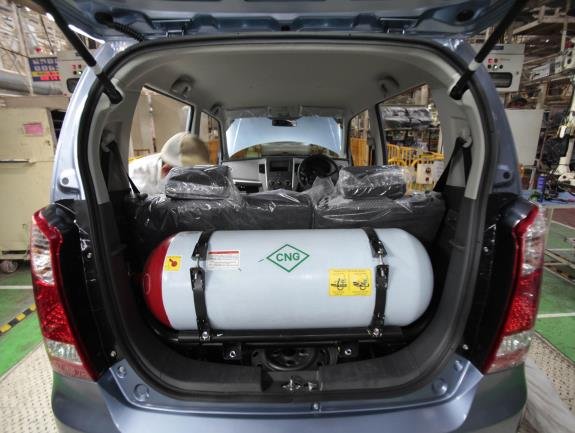Since the announcement last year that the federal government would spearhead the promotion of the use of the compressed natural gas (CNG) facility, we have waited for its arrival with bated breaths. Maybe the logistics for the launch were slow in coming, it took more than a year to materialise. Happily enough, it became a reality finally, last month, when the launching ceremony took place simultaneously in Abuja and Lagos, amidst the usual pomp and pageantry. To begin with, 12 conversion centres have been commissioned and will henceforth be used: eight in Abuja and four in Lagos.
The CNG is a game-changer of sorts. Touted as such from day one of his administration, President Ahmed Bola Tinubu sees the CNG as a key pillar of the country’s energy future. It is meant to be an alternative to petrol usage whose price has continued to soar. Perhaps, even more than that, CNG is known to be odourless, tasteless, cleaner and is abundantly available in the country. It is also a far, far more affordable alternative to all the traditional fuels.
The CNG is also meant to be a cornerstone of the regime of palliatives the government is offering to the public, particularly the workers, to cushion the effects of rising inflation occasioned by the removal of fuel subsidies and the stabilisation of the naira. To that effect, hybrid power CNG buses would be deployed to the NLC for the workers’ transportation facility and I guess many more would be deployed along routes for public use.
The arrival of the conversion plants and refuelling centres in Abuja and Lagos is a clear indication that there is some seriousness in the resolve of the government to go ahead with the CNG project. I decided to be curious not only for my readers’ sake but also because I travel a lot and such potential savings will go a long way. I checked around to find out the potential savings to accrue to a typical motorist living in Abuja.
- NIGERIA DAILY: How Victims Of Flooding Struggle To Get Back On Their Feet
- Biosafety: US pledges support for Nigeria’s food safety
I did some leg work and the findings are fascinating. I learnt that a vehicle fitted with 4-cylinder engines and invariably a 65-litre tank during conversion can hold about 20 SCM of gas, enough to power it for roughly 300 kilometres. In contrast, covering the same distance with petrol of the equivalent of about 25 litres would cost N17,500, while CNG costs just 4,600 naira—a staggering over 70 per cent savings.
This is not just a theoretical calculation. On a recent visit to the NIPCO station in Kubwa, I spoke with a Keke rider using a tricycle with a follow come tank who shared his personal experience. “Before, I spent about N6,000 every day just on fuel,” he recounted. “But now, with CNG, I only spend N1,200 —N700 in the morning and N500 in the afternoon.” The difference is life-changing.
Despite the clear cost benefits seen in Abuja, the initial investment required to convert a vehicle to CNG remains a hurdle for many. In Abuja, the conversion process, which takes about three hours, costs between N1.2 to N1.5 million. When the conversion is completed, you could have a dual-fuel system that allows vehicles to run on both CNG and petrol or diesel, a mechanism which would still be essential for motorists plying roads where CNG stations are non-existent.
While the upfront cost may seem prohibitive, the long-term savings would more than justify the expense. For example, if a driver can save N12,900 for every 300 kilometres travelled, the conversion cost could be recouped in a relatively short period, making it a financially sound decision for those in Abuja.
But this is just part of the story. The road to widespread CNG adoption in Nigeria is paved with challenges, especially outside the capital. Even in Abuja, one significant issue is the lack of operational conversion centres. Among those listed on the Presidential initiative-CNG platform, only a few, like Portland Energy, are fully functional. This scarcity makes it difficult for willing Abuja citizens to access the services needed to convert their vehicles. Also, the limited availability of CNG refuelling stations poses another obstacle in Abuja. Most stations are located on the city’s outskirts, such as the NIPCO stations in Kubwa and along Airport Road.
Outside of Abuja, the situation is even more dire. The restricted reach of Nigeria’s gas pipeline network, which only extends from the south to as far as Lokoja, means that gas must be transported by cascade trucks to the North, adding complexity and cost to the supply chain. Additionally, despite the commissioning of new NNPC stations across the country, none of these stations are currently selling CNG—a gap that urgently needs addressing This logistical challenge severely limits the availability of CNG in these areas, making the transition to CNG a distant reality for many.
There are other problems associated with the mechanical conversion itself. The CNG tank is said to be large and unwieldy and could take up space making the conversion unattractive to our commercial drivers. Nevertheless, this problem could be discounted when vehicles with follow come CNG tanks flood the market.
On a final note, one should emphasise that it is the seamless supply of gas all over the country that should herald the CNG revolution and see to its success.

 Join Daily Trust WhatsApp Community For Quick Access To News and Happenings Around You.
Join Daily Trust WhatsApp Community For Quick Access To News and Happenings Around You.


